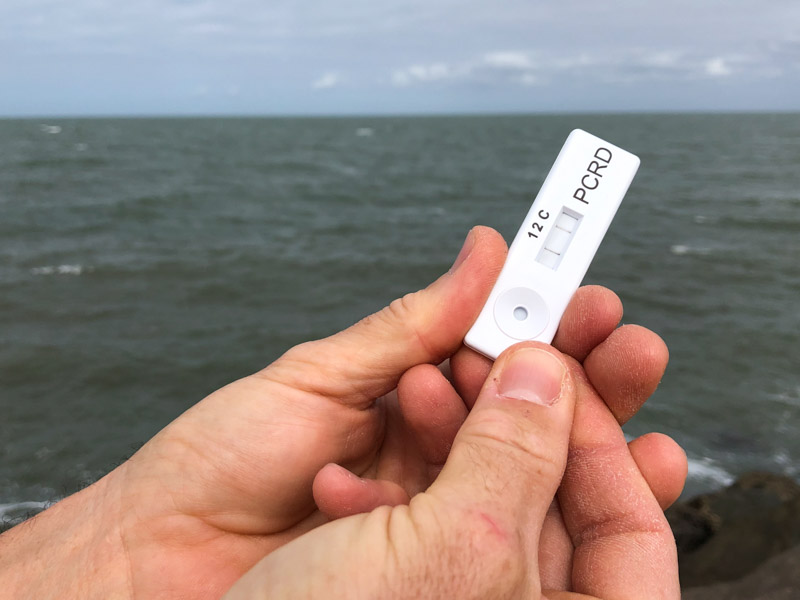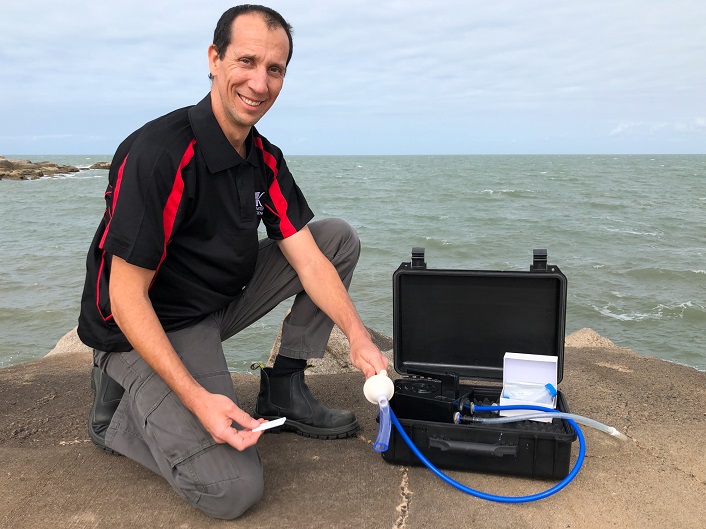Australian Institute of Marine Science (AIMS) researchers are using DNA technology to enhance their ability to detect coral-eating crown-of-thorns starfish before they cause destruction on the Great Barrier Reef.
The scientists can now reliably detect traces of crown-of-thorns starfish larvae in small seawater samples.
The traces are genetic material found in environmental samples and are known as environmental DNA. The sources of eDNA in marine samples may be biological materials like shed skin cells or other excretions.

Increasing the speed of crown-of-thorns starfish detection will enable reef managers to intervene sooner in destructive outbreaks, helping to reduce the loss of corals on the Great Barrier Reef.
An adult crown-of-thorns starfish (Acanthaser cf. solaris) can eat a dinner plate-sized chunk of coral every day, and monitoring from AIMS and other organisations have documented the wide impact of crown-of-thorns starfish on the Reef over the course of four major outbreaks since the 1960s.
AIMS Principal Research Scientist Dr Sven Uthicke said the new method was able to detect crown-of-thorns starfish populations at very low densities, or even document the build-up of larvae before high densities of adults occur on reefs.
"Control of outbreaks have been hampered because standard monitoring techniques like traditional diver-based surveys don't detect outbreaks at early enough stages, preventing rapid intervention that would be so important for the Great Barrier Reef," he said.
"In the face of climate change, protecting coral from other stressors like crown-of-thorns starfish remains crucial for reef protection. The starfish are also likely to have a detrimental effect on reef restoration efforts."
Dr Uthicke said the new technique also allowed them to detect young crown-of-thorns starfish after they settle on reefs with sensitivity much higher than traditional diver-based surveys. Often the native starfish hide under coral plates while young starfish are only a few millimetres wide making them difficult for divers to see. For these reasons, it is important to have a wide variety of tools available to effectively monitor the starfish populations on the Great Barrier Reef.

Dr Uthicke and his team developed the technique over almost a decade using samples collected from mid shelf reefs in the central to far northern section of the Great Barrier Reef. They are working towards making quick crown-of-thorns starfish detection easier to use in the field by managers and tourism operators but detection of really low densities of the starfish using this enhanced method are likely to remain with professional research providers for now.
The research was presented at the recent Environmental DNA conference in Hobart. Some parts of the research were also published recently in the Science of the Total Environment journal.
This innovative approach to crown-of-thorns starfish detection is one of several techniques being progressed as part of the recently announced CoTS Control Innovation Program. This is a collaboration between the Great Barrier Reef Foundation, AIMS, CSIRO, James Cook University and the University of Queensland, and is funded by the partnership between the Australia Government's Reef Trust and the Great Barrier Reef Foundation.






